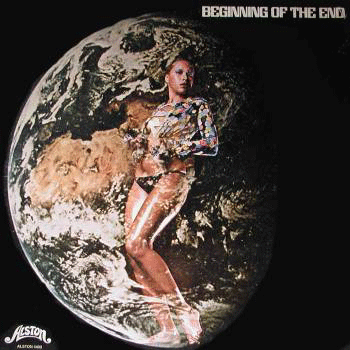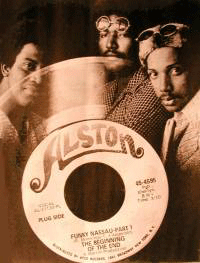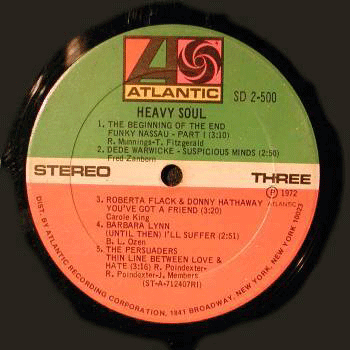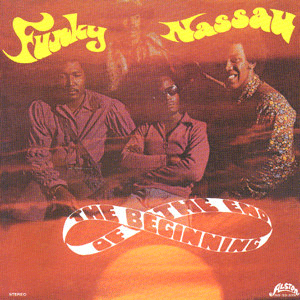Set in a minor key, "Funky Nassau" was a new sound for the Bahamas. It is indeed rare to find many songs in these islands written in the minor tonality. This I believe is due in part to the jovial nature of Island people. One of the few songs other than Funky Nassau is a song from Trinidad entitled 'Pan In A minor'. The influence of American funk music is absolutely present in the rhythm of this music. One would have to know the sound of junkanoo in order to detect it. For non- Bahamians, I would imagine that there would just be a different feel about this rhythm not knowing exactly what is different about it.
The Beginning Of The End marked the end for the soft more subdued sound of goombay. Seen as rebels, the aggressiveness in the music made an impression worldwide with this new funk. The signature guitar line played in 4ths adds a flavor rarely found in music of the islands. The bass patterns that usually plays simple root and fifth on the tonic sub-dominant, and dominant typical of music of the region is nowhere to be found. Instead a steady stream of syncopated notes gives the music a feeling of forward motion. Percussion works is a totally new concept. The use of the ride cymbals, and funk snare especially in the drum break , throws all of the rules out of the window for that particular era in Bahamian music.
It is quite easy to state all of the foreign elements that are fused into this music, but equally as noticeable to hear the things that are Bahamian. Upon a second look, the hi-hat cymbals maintains a calypso style pattern throughout the song with the exception of the drum solo. The guitar harmony although new and innovative, stresses the eight note and the the first note of the measure thus implying a junkanoo beat which has the same character. The only difference is that the junkanoo phrase is contained within a one bar phrase as opposed to the two bar phrase played by Roy Munnings on the guitar. Brass, although at the time was only associated with jazz play a vital role in the sound and freshness in this arrangement. Neville Samson who came to the Bahamas from Trinidad joins Ralph Munnings (sax) to produce the sweetest two part writing. The voicing's for the most part are in thirds, but when the main line goes up into the upper register of the trumpet, like the guitar, the use of voicing's in fourths adds a wonderful tension to the overall sound.
Use of the organ by Ray Munnings adds the signature sound commonly found in funk. Recording artists like The Islay Brothers, Marvin Gaye, and even jazz/fusion artist like Herbie Hancock used similar sounds in that era. All of these elements garnished with the blues style singing by Ray Munnings makes this music appealing to an even wider audience. If one were to separate all of the elements that went into this musical pot, we would probably end up with a taste from each corner of the globe. Below is a sample of "Funky Nassau", the first million seller out of the Bahama Islands.







